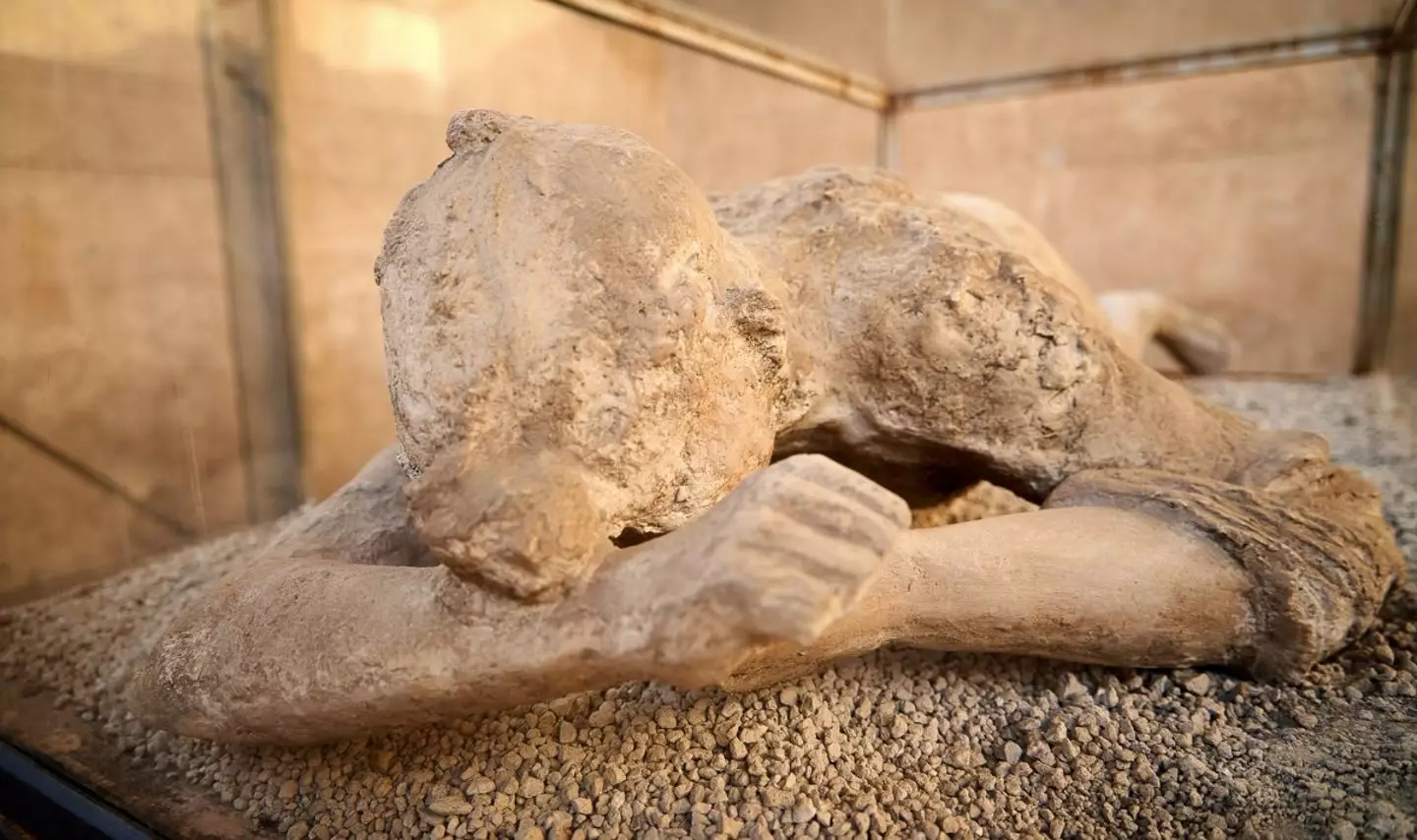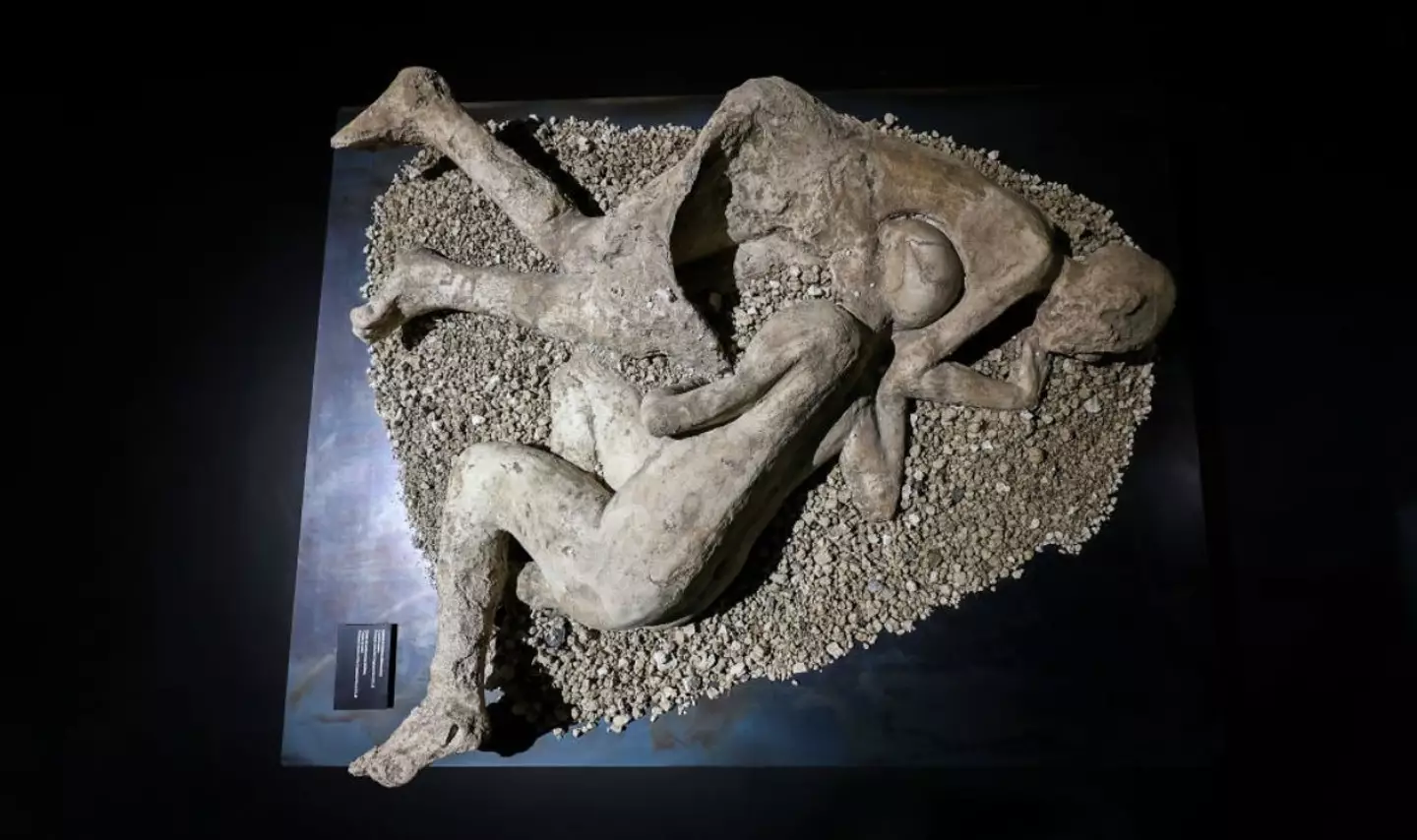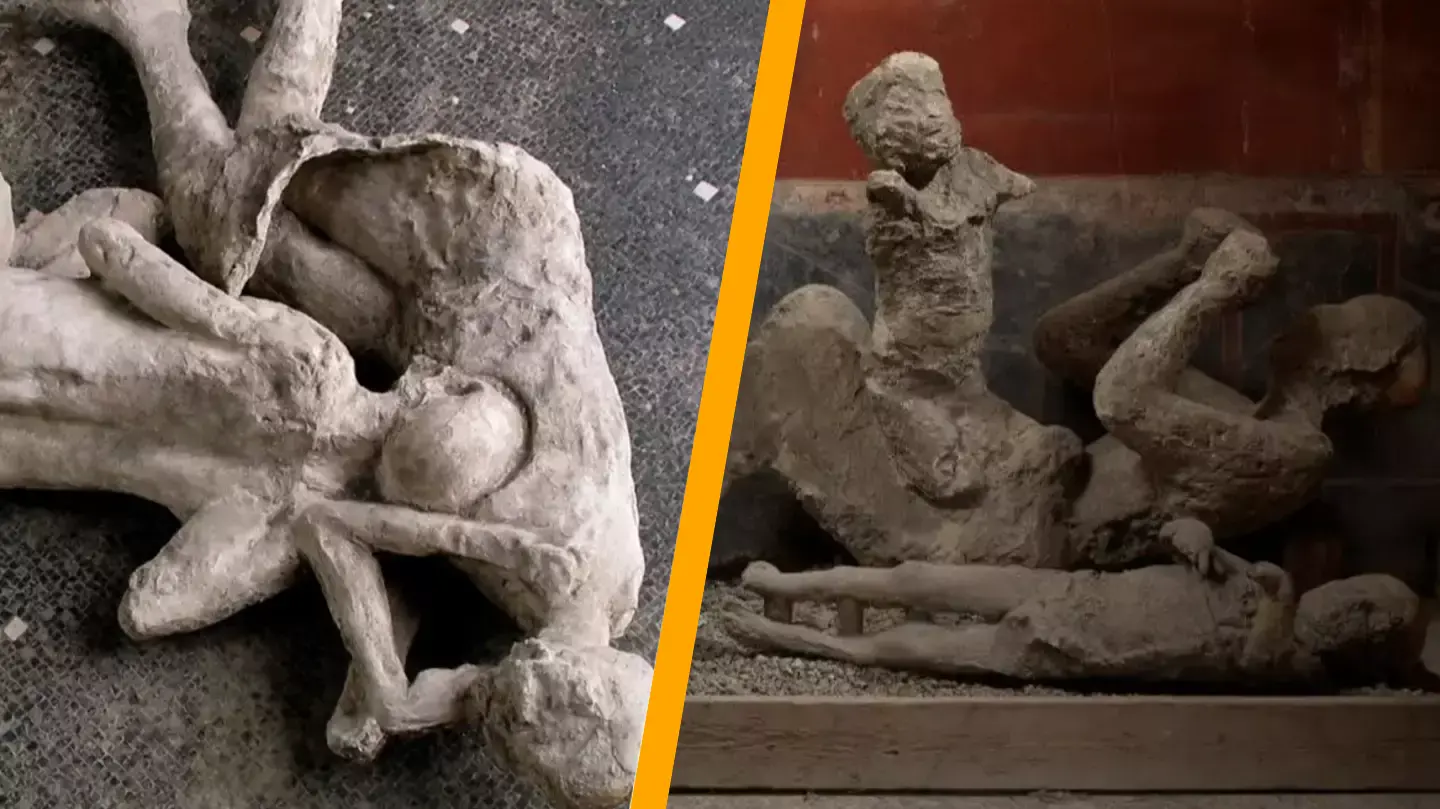Long-held beliefs about the residents of Pompeii may be incorrect, according to scientists who have examined ancient DNA samples.
Mount Vesuvius erupted on October 24, 79 AD. This catastrophic event, one of the most lethal volcanic outbursts in history, caused multiple Roman settlements to be engulfed by enormous pyroclastic flows and ash deposits.
Pompeii, arguably the most renowned of these Italian locales, suffered a tragic loss of around 2,000 lives in the vicinity due to the eruption.
A study conducted in 2021 highlighted that the people had ‘no escape,’ and those who initially survived were eventually overcome by hazardous pyroclastic flows.
Efforts to excavate Pompeii began in the 1740s, but it was not until the 1860s that archaeologist Giuseppe Fiorelli began making plaster casts of victims whose bodies were preserved by a thick ash layer.
According to CNN, Fiorelli, an Italian expert, captured the forms of 104 individuals by pouring plaster into the voids left by decomposed bodies.
Since these discoveries, numerous stories and myths about the Pompeians have entered popular culture.
Among these are the belief that two people found together were sisters, and that an adult with a golden bracelet holding a child was a mother-child pair.

However, a new study in the Current Biology journal claims these family connections are mistaken.
Seeking to determine the gender, ancestry, and genetic relationships of the victims, researchers from Italy’s University of Florence, the Max Planck Institute for Evolutionary Anthropology in Leipzig, and Harvard University have been examining the ancient DNA from various casts.
On November 7th, the team announced their findings, revealing that the individual holding the child was genetically male.
The DNA analysis also indicated that the man was not related to the child he was holding.
Furthermore, at least one of the presumed sisters found in an embrace was genetically male.
“This research shows how genetic analysis can significantly add to the stories constructed from archaeological data,” stated Professor David Caramelli from the University of Florence’s Department of Anthropology.

“The findings challenge enduring notions such as the association of jewellery with femininity or the interpretation of physical proximity as evidence of familial relationships,” he added.
Professor David Reich, another study author, noted: “The genetic results encourage reflection on the dangers of making up stories about gender and family relationships in past societies based on present-day expectations.”
He further commented, “The scientific data we provide do not always align with common assumptions. For example, the discovery of an adult wearing a golden bracelet and holding a child, traditionally seen as a mother and child, turned out to be an unrelated adult male and child.
“Similarly, individuals thought to be sisters, or a mother and daughter, included at least one genetic male. These findings challenge traditional gender and familial assumptions,” he explained.
The study, titled ‘Ancient DNA challenges prevailing interpretations of the Pompeii plaster casts’, also highlights that many Pompeians who perished during the eruption had diverse ancestries.

Their backgrounds were predominantly traced to immigrants from the eastern Mediterranean, emphasizing the cosmopolitan nature of the Roman Empire at the time, according to the study.
Alissa Mittnik from the Max Planck Institute for Evolutionary Anthropology commented, “Our findings have significant implications for the interpretation of archaeological data and the understanding of ancient societies.”
“They highlight the importance of integrating genetic data with archaeological and historical information to avoid misinterpretations based on modern assumptions.”
“This study also underscores the diverse and cosmopolitan nature of Pompeii’s population, reflecting broader patterns of mobility and cultural exchange in the Roman Empire,” she concluded.
The full study, ‘Ancient DNA challenges prevailing interpretations of the Pompeii plaster casts,’ can be accessed in Current Biology.

